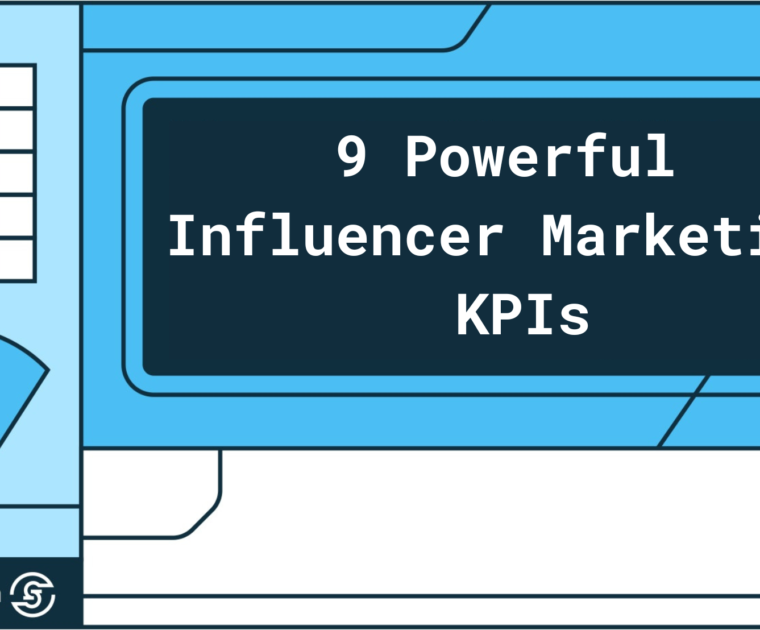The last decade has seen the preeminent rise of social media influencer marketing. Nearly 41 million creators have between 10,000 and 100,000 followers, according to Linktree’s Creator Report. giving brands the perfect opportunity to capitalize on the skills on creators and the effectiveness of influencer marketing to reach and engage new audiences.
However, clever brand leaders won’t blaze trails blindly. Instead, they ensure they have protections in place that will keep them from absorbing the impact of negative publicity and financial liabilities that may crop up when influencer campaigns go wrong. And they sometimes do. Smart brands install influencer insurance.
This post reviews the risks and challenges that can surface unexpectedly, leaving brands navigating unfamiliar territory regarding influencer marketing. Plus, let’s unveil some tailored solutions for brands, content creators, and influencers.
Listen to this article
What Influencer Marketing Risks Do Brands Face?
Although influencer marketing is booming, with expectations of the market expanding to roughly $16.4 billion in 2022, this fast-growing industry faces unique risks. Much of the time it seems they pop up out of nowhere. Many of the exposures we’ve listed below snowball from supposed annoyances to high-dollar lawsuits. Let’s review some risks brand/influencer teams face regularly.
FTC Noncompliance
The Federal Trade Commission (FTC) recommends influencers identify sponsored content with the #sponsored or #ad hashtags. However, not all content creators follow these guidelines. Some never label their content whatsoever. Unsurprisingly, the FTC has cracked down on content creators and influencers, shifting influencer guidelines from suggestions to mandatory rules that it can (and will) enforce. It pays to watch new FTC regulations closely so you’re not blindsided when you least expect it.
Often, it’s not just the FTC that are watching influencers. This week, reality start Kim Kardashian agreed to pay a $1.26 million fine levied by the US Securities and Exchange Commission in which she and several other influential celebs including boxer Floyd Mayweather Jr and basketball star Paul Pierce were accused of promoting a crypto coin as part of a plan to inflate the value of the coin ahead selling it to investors.
So, it’s probably not a coincidence that the SEC released this video the same day the settlement was reached.
Unfulfilled Expectations
The headlines sometimes feature famous battles between influencers and brands due to unfulfilled expectations. A legal struggle often ensues when agreements are forgotten or ignored and promises are broken. Brands and influencers must be on the same page, preferably via a well-written legal contract called an influencer brief. However, unfulfilled expectations can still create issues regardless of legalities. Influencers and brands can avoid these costly hurdles by nurturing an open and transparent business relationship.
Legal Liability
There’s a saying that talk is cheap — but those same cheap and “innocent” words could result in costly lawsuits. Several lawsuits could surface from mere words, such as libel (defamation), copyright and trademark infringement, breach of confidentiality, negligent misstatements, and bodily injury (arising from content). Here’s the thing: what may seem harmless to one person could be offensive to another. While walking on eggshells is no fun, understanding legal liability is a critical aspect of your influencer marketing strategy.
Business Downtime
Technology sometimes fails us, and service outages can come from many angles, from routine system maintenance to cyber extortion attacks. When influencers and brands depend on a cloud service for continuity, a malfunction can trigger business interruption. When content creators and influencers can’t do their job, brands often pay the price (i.e., lost income, lawsuits, extra operating costs, etc.). Take it from us; these occurrences happen at the most inconvenient times.
Data Protection
Cybersecurity has become a priority for most company leaders, primarily because of newly evolved cyber liability risks. Consider the massive data breaches Robinhood and Twitch experienced in 2021. Although a data breach isn’t anything more than a disclosure leak or security violation, they cost US businesses more than $4 million per incident. Unfortunately, hackers are savvy on many platforms brands use for influencer marketing, bumping data protection up the priority list.
Third-party Injury
There’s nothing casual about endorsing products on a social media platform, mainly because of the legal ramifications that might erupt. For example, people can make numerous claims against content creators who endorse a defective product. Some allegations include negligence, fraud, and liability. When brands roll out new products that result in third-party or personal injury, such as financial loss, there could be several lawsuits to juggle. Even if the suit is baseless, defense fees add up quickly, especially with many parties holding liability.

What Is Influencer Insurance? And What Insurance Coverage Do Brands Need?
Media Liability Insurance (also known as Influencer Insurance) protects creators and brands from potential lawsuits involving their social media activities.
According to the extensive list of risks above, brands and influencers face a plethora of challenges. However, the insurance industry is notoriously antiquated, so relying on “old school” problems to solve emerging risks doesn’t pan out. Christine McCarthy from Scale Underwriting — developers of the new media liability insurance product, Sale Social — sums it up well, “The emergence of TikTok and other digital content platforms requires the insurance industry to think differently.”
As a result, brands must address the well-known risks their influencers will undoubtedly face. We recommend those involved in influencer marketing to consider purchasing insurance containing protection from the following:
- Advertising exposures: This coverage protects against a claim for breach of contract from the advertising agent or brand.
- Publishing exposures: This portion protects against libel (defamation), copyright and trademark infringement, breach of confidentiality, negligent misstatements, and bodily injury (arising from content).
- Regulatory exposures: FTC investigation and defense costs can add up quickly, but this coverage protects against failure to disclose paid endorsement.
As mentioned, only bespoke insurance products can fully protect brands and their influencers. Additionally, here’s a list of coverages brands opt for when pursuing influencer marketing goals:
- General liability protects brands against basic business risks and is the foundation of any risk management plan.
- Business interruption insurance replaces income lost and extra expenses.
- Cyber liability protects brands against damages from specific electronic activities.
- Property insurance reimburses companies for direct property losses.
- Product liability protects against claims alleging your product or service caused injury or damage.
- Professional liability protects brands against lawsuits of inferior work or service.

Where Can Brands Purchase Influencer Insurance?
Brands can depend on three main ecosystems to provide influencer insurance, including:
- Commercial insurance broker, representing the buyer
- Insurance agent, representing the insurer
- Independent marketplace, partnering with other industry players
Naturally, shopping for commercial insurance is a nuanced process. It’s more than merely landing on the cheapest deal. Brands want online support, multi-channel communication, comprehensive coverage, and more. Working with a trusted commercial insurance broker is an excellent way to address your particular needs, especially one specializing in your industry.
Insurance agents can also be helpful; however, they do bat for the insurer instead of the buyer. So, you might end up with more products than you genuinely need. Independent marketplaces are designed for convenience and efficiency as opposed to guidance and support. It’s a solid idea to know what you want before teaming with an independent marketplace.

How Much Does Influencer Insurance Cost?
Although each brand is unique and unlike another, the insurance industry relies on several concrete factors to determine the premium cost for influencer insurance. Aside from your brand’s size and developmental stage, insurers consider the following factors:
- Exposures: risks being insured
- Company practices; views on safety, compliance, and risk management
- Revenue: total amount of income generated by the sales of goods and services
- Location: where your business is located
- Number of employees: size of your workforce
- Business equipment and property: includes office equipment, specialized tools, real property, etc.
- Program structure: the amount of deductible and willingness for a company to assume more risk
- Claims history: the type and amount of past claims against the company
Influencer marketing isn’t going away anytime soon, making it an excellent idea to understand the terrain extensively. Identification is a massive part of risk management, and some might say it’s half the battle. By taking into account known risks and practicing clever risk management techniques, brands can become savvy marketers and harness influencers’ impact to the fullest.
Influencer marketing is a hot topic currently. Nearly 41 million creators have up to 100,000 followers, giving brands the perfect opportunity to capitalize on this technique. However, clever brand leaders won’t blaze trails blindly. This post reviews the risks and challenges that can surface unexpectedly, leaving brands navigating unfamiliar territory regarding influencer marketing. Plus, let’s unveil some tailored solutions for brands, content creators, and influencers.

About the Author
Shraddha Nair (She/Her)
Shraddha is a Client Advisor, Customer Success team member with Founder Shield, a risk management partner for rapidly evolving, high-growth companies. Founder Shield works with more venture-backed companies than any other brokerage in the world and was created to take the stress out of buying insurance for venture-backed startup companies. .







